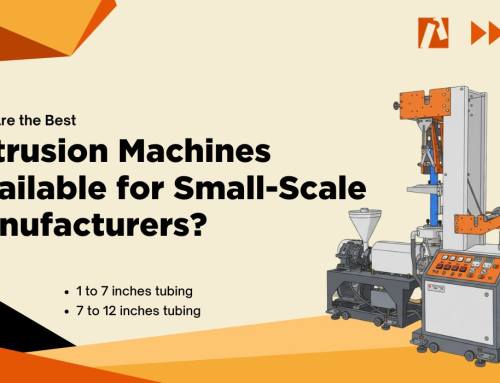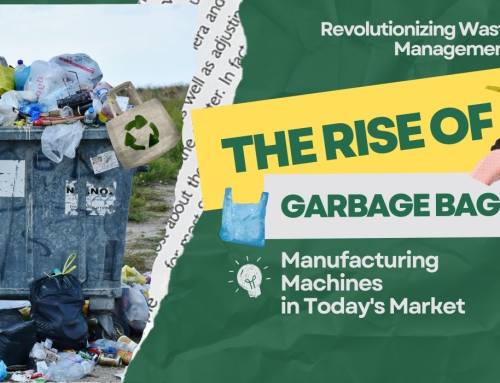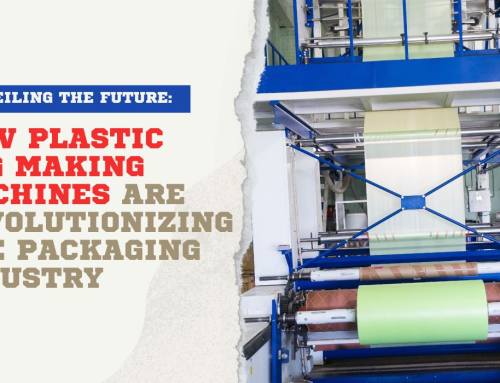The introduction of plastic extrusion machinery has revolutionized the plastic industry. This cutting-edge technology has transformed the way plastic products are manufactured, making the process more efficient, cost-effective, and environmentally friendly.
Plastic extrusion machinery utilizes advanced techniques to melt raw plastic materials and shape them into various forms, such as pipes, sheets, and profiles. With this breakthrough technology, manufacturers can easily customize plastic products according to specific requirements, reducing waste and minimizing production time.
Furthermore, plastic extrusion machinery enables the production of high-quality plastic products that meet stringent industry standards. As a result, businesses can deliver reliable and durable plastic solutions to their customers, further enhancing their reputation and gaining a competitive edge in the market.
With the increasing demand for sustainable and recyclable plastic products, plastic extrusion machinery has become a game-changer in the industry. It supports the development of eco-friendly materials, promotes circular economy practices, and reduces plastic waste. By investing in this innovative machinery, businesses can contribute to a greener future while maximizing their productivity and profitability.
Embrace the future of plastic manufacturing with plastic extrusion machinery and revolutionize your business.
The process of plastic extrusion
Plastic extrusion is a sophisticated manufacturing process that involves melting raw plastic materials and shaping them into continuous forms. The process begins with the feeding of plastic granules into a hopper, where they are heated and transformed into a molten state by the action of a rotating screw within the extruder barrel. This screw not only conveys the material forward but also mixes it thoroughly to ensure uniform melting. The controlled temperature is crucial, as it prevents degradation of the plastic, thus maintaining its integrity and performance characteristics.
Once the plastic is fully melted, it is forced through a die at the end of the extruder. The die is specifically designed to create the desired shape of the final product, whether it be pipes, sheets, films, or profiles. As the molten plastic passes through the die, it cools and solidifies into the desired shape. The extrusion process can be continuous, meaning that the product can be produced in long sections, which are subsequently cut to the required lengths. This efficiency in production is one of the key reasons why plastic extrusion is favored in manufacturing.
After exiting the die, the newly formed plastic product often undergoes additional cooling, which is achieved using water baths or air cooling systems. This step is essential to ensure that the material retains its shape and is ready for further processing or packaging. Depending on the application, the extruded product may go through additional operations such as cutting, printing, or coating. Ultimately, the plastic extrusion process not only streamlines production but also allows for a high degree of customization, making it a cornerstone of modern plastic manufacturing.
Advantages of plastic extrusion machinery
Plastic extrusion machinery offers numerous advantages, making it an attractive option for manufacturers across various industries. One of the most significant benefits is the high level of efficiency it provides. The continuous extrusion process allows large quantities of plastic products to be produced in a shorter time frame than traditional manufacturing methods. This efficiency translates into lower production costs and faster turnaround times, critical in today’s fast-paced market.
Additionally, plastic extrusion machinery is highly versatile and can process many plastic materials, including thermoplastics and thermosetting plastics. This adaptability enables manufacturers to produce diverse products, from simple pipes to complex profiles and sheets. Furthermore, the ability to customize the extrusion process means that manufacturers can tailor products to meet specific customer requirements, enhancing their competitive edge.
Another key advantage of plastic extrusion is its ability to minimize waste. During the extrusion process, manufacturers can recycle scrap materials generated during production, using them as feedstock for new products. This reduces material costs and aligns with increasing demands for sustainability and eco-friendly practices in the plastics industry. By investing in plastic extrusion machinery, businesses can contribute to a circular economy while achieving high-quality output.
Applications of plastic extrusion in various industries
Plastic extrusion has applications in various industries, showcasing its versatility and effectiveness. One of the most prominent sectors utilizing extrusion technology is construction. Extrusion processes are largely dependent on the production of plastic pipes, fittings, and profiles for plumbing, electrical, and structural applications. These products offer durability, corrosion resistance, and ease of installation, making them ideal for modern construction.
In the automotive industry, plastic extrusion is employed to manufacture components such as weather stripping, interior trim, and wiring ducts. The lightweight nature of extruded plastic products contributes to fuel efficiency and overall vehicle performance, aligning with the industry’s push toward more sustainable transportation solutions. Moreover, the ability to produce complex shapes and profiles allows for enhanced design flexibility in automotive applications.
The packaging industry also greatly benefits from plastic extrusion technology. Extruded films and sheets are widely used for packaging food, pharmaceuticals, and consumer goods. These materials provide barrier properties that protect products from moisture, oxygen, and contaminants, extending shelf life and ensuring product safety. With the increasing focus on sustainable packaging solutions, advancements in biodegradable and recyclable extrusion materials are becoming critical in this sector.
Recent advancements in plastic extrusion technology
Recent advancements in plastic extrusion technology have significantly enhanced the process’s efficiency and capabilities. One notable development is the integration of Industry principles into extrusion machinery. This involves using smart sensors and IoT (Internet of Things) technology to monitor and control the extrusion process in real-time. Manufacturers can optimize production parameters, reduce downtime, and predict maintenance needs, improving overall productivity and reducing operational costs.
Another exciting advancement is the development of multi-layer extrusion techniques, which allow for creating products with varying properties in a single extrusion process. This technology enables manufacturers to produce films and sheets with barrier layers for enhanced performance, such as improved thermal resistance or mechanical strength. These multi-layer products are particularly valuable in the packaging and automotive industries, where specific material properties are essential for product performance.
Moreover, the introduction of advanced materials for extrusion has opened new avenues for innovation. Manufacturers can now work with high-performance polymers and composites, allowing for the production of lightweight, durable, and heat-resistant components. Bioplastics are also gaining traction due to the development of materials derived from renewable resources. These advancements meet industry demands and align with the growing emphasis on sustainability in the plastic industry.
Key features to consider when choosing plastic extrusion machinery
When selecting plastic extrusion machinery, several key features should be considered to ensure optimal performance and compatibility with manufacturing needs. First and foremost, the capacity of the extruder is crucial; it should align with the production volume and type of materials being processed. A machine with adjustable screw speed and temperature controls will allow for greater flexibility in processing different materials and achieving desired product specifications.
Another important factor is the design of the die. The die determines the shape and dimensions of the extruded product, so choosing a die that can accommodate the specific product requirements is essential. Additionally, dies with quick-change capabilities can significantly reduce downtime during production, making them an attractive option for manufacturers producing various products.
Furthermore, energy efficiency is becoming increasingly important when selecting plastic extrusion machinery. Machines that incorporate energy-saving technologies can help reduce operational costs and minimize the environmental impact of production. Features such as variable speed drives, efficient heating systems, and automated control mechanisms can enhance the overall energy efficiency of the extrusion process, contributing to a more sustainable manufacturing operation.
Top manufacturers of plastic extrusion machinery
The market for plastic extrusion machinery is populated by several leading manufacturers, each known for their innovation and quality. One of the top players in the industry is Abhi Plastics, an Indian company renowned for its advanced extrusion systems with affordable pricing offers. They offer a wide range of extruders, dies, and complete production lines that cater to various applications, from automotive to packaging. Abhi Plastic’s commitment to innovation and sustainability makes it a trusted partner for many manufacturers.
Another prominent name is Davis-Standard, a global leader in designing and manufacturing extrusion and converting systems. With decades of experience, Davis-Standard is known for its custom solutions that meet the unique needs of its clients. Their machinery is equipped with state-of-the-art technology, ensuring high efficiency and product quality. The company also strongly emphasizes after-sales support, providing customers with the necessary resources to maintain and optimize their equipment.
Finally, Battenfeld-Cincinnati is recognized for its cutting-edge extrusion technology, particularly in producing pipes and profiles. Their innovative designs focus on energy efficiency and high performance, enabling manufacturers to achieve competitive advantages. Battenfeld-Cincinnati also actively participates in research and development, continually improving their products to align with industry trends and customer demands.
Maintenance and troubleshooting tips for plastic extrusion machinery
Proper maintenance of plastic extrusion machinery is essential to ensure longevity, efficiency, and product quality. Regular inspections should be conducted to check for wear and tear on critical components, such as the screw, barrel, and die. Creating a maintenance schedule that includes routine cleaning, lubrication, and calibration of machine settings is advisable. Keeping the machinery in optimal condition prevents unexpected downtime and enhances overall production performance.
In addition to preventive maintenance, operators should be trained to identify common issues that may arise during the extrusion process. Problems such as inconsistent product dimensions, excessive melt temperature, or material degradation can indicate underlying issues with the machine or the materials used. With a readily available troubleshooting guide, operators can quickly diagnose and address problems, minimizing production disruptions.
Moreover, it is crucial to maintain open communication with the equipment manufacturer for technical support and guidance. Many manufacturers provide resources such as technical manuals, online support, and training programs to assist operators in managing their extrusion machinery effectively. Building a strong relationship with the supplier can lead to improved machine performance and access to the latest technological advancements in the field.
Future prospects and trends in the plastic extrusion industry
The future of the plastic extrusion industry appears promising, driven by ongoing innovations and shifting market demands. One of the most significant trends is the increasing focus on sustainability within the plastics sector. As consumers and regulators call for more environmentally friendly practices, manufacturers are exploring biodegradable and recyclable materials suitable for extrusion processes. This shift is expected to reshape product development and create new opportunities for extrusion technology.
Another trend is the adoption of automation and smart manufacturing practices. Integrating artificial intelligence and machine learning into extrusion machinery enhances process control and optimization. Predictive maintenance, real-time monitoring, and data analytics can significantly improve operational efficiency and reduce waste. As these technologies become more accessible, manufacturers will be better positioned to meet the challenges of a competitive marketplace.
Lastly, the demand for customization and specialized products is on the rise. Consumers increasingly seek tailored solutions that meet their specific needs, which presents a unique challenge and opportunity for extrusion manufacturers. The ability to produce small batches of custom products without sacrificing efficiency will be a key focus area moving forward, leading to the development of more flexible and adaptable extrusion systems.
Conclusion: The impact of plastic extrusion machinery on the plastic industry
The advent of plastic extrusion machinery has undeniably revolutionized the plastic industry, providing manufacturers with the tools needed to produce high-quality, customized products efficiently and sustainably. The advantages of the extrusion process, including reduced waste, enhanced productivity, and the ability to work with a variety of materials, have positioned it as a vital component of modern manufacturing.
As the industry continues to evolve, advancements in technology and a growing emphasis on sustainability will further shape the landscape of plastic extrusion. Manufacturers who embrace these changes and invest in innovative machinery will be better equipped to meet the demands of a rapidly changing market. The future of the plastic industry hinges on the ability to balance efficiency, quality, and environmental responsibility, with plastic extrusion machinery at the forefront of this transformation.
In conclusion, the impact of plastic extrusion machinery goes beyond mere efficiency; it represents a shift toward more sustainable practices and a commitment to innovation. By adopting these advanced technologies, businesses can enhance their productivity and contribute to a greener future, redefining the role of plastics in our world. Embracing this revolution in plastic manufacturing is not just a strategic move but a necessary step toward a sustainable and prosperous future.








Leave A Comment